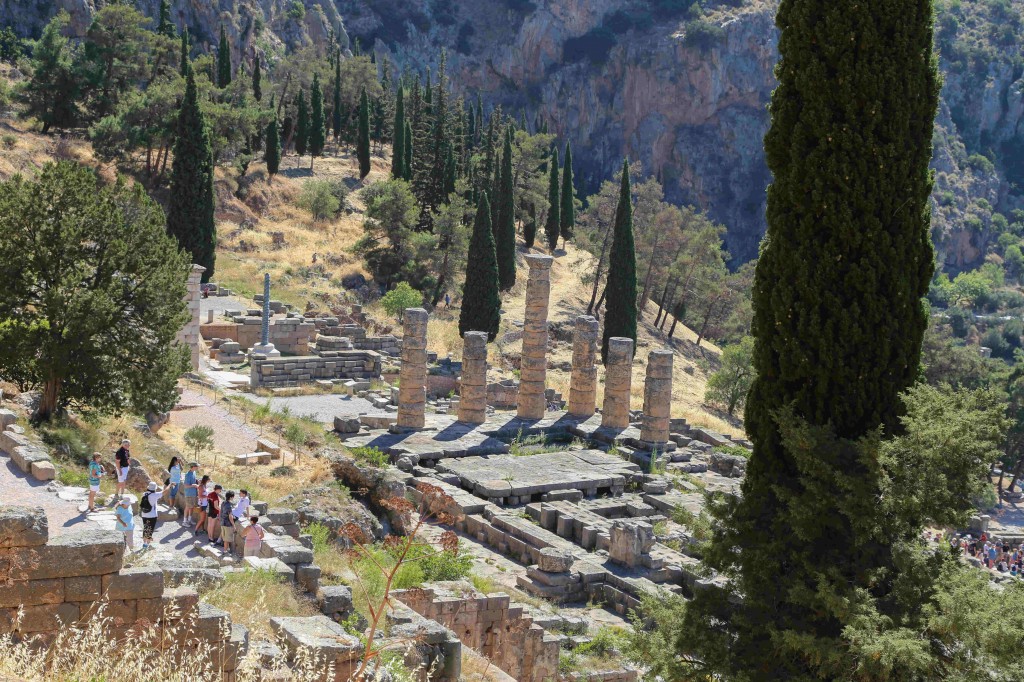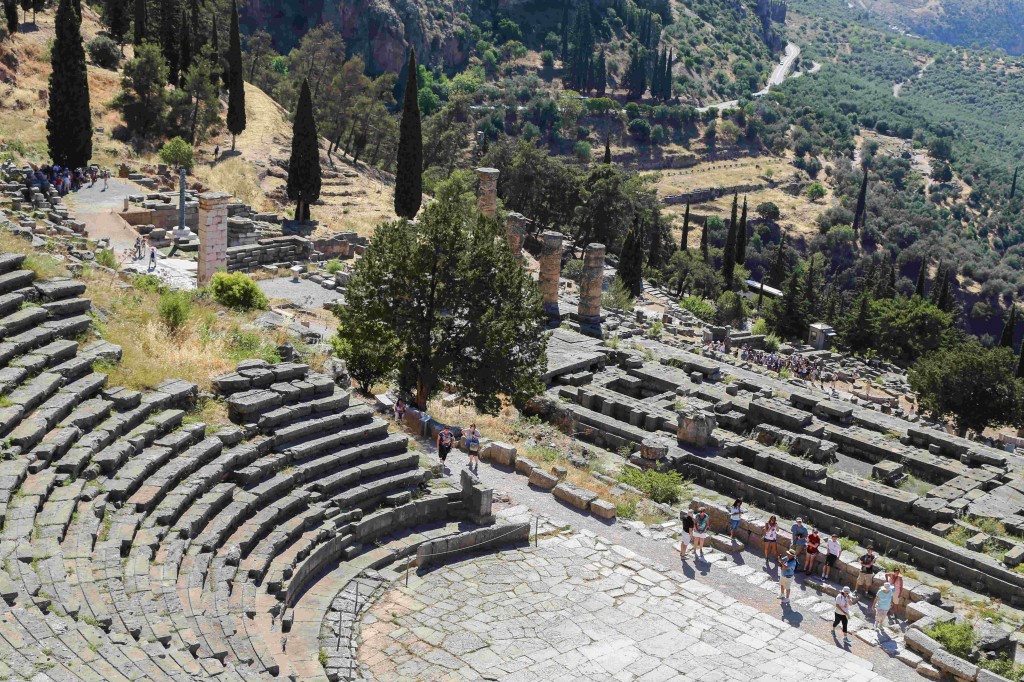
A guest post by Janet M. Ozsolak
One of the highlights of this trip was meeting a dear friend, Euthymia, who was a participant in HeroesX, v1. HeroesX created a close-knit community where some of the participants had a chance to meet in-person after being fellow learners. Euthymia took me to the Sanctuary of Asclepius in Epidaurus where the magnificent Epidaurus Theater still stands. The Sanctuary was a healing place through art, natural resources, sports and through connections to divinity. In the Sanctuary, there was a stadium, gymnasium, theater and springs.
The asclepeion at Epidaurus was the most celebrated healing center of the Classical world, the place where ill people went in the hope of being cured. To find out the right cure for their ailments, they spent a night in the enkoimeteria, a big sleeping hall. In their dreams, the god himself would advise them what they had to do to regain their health. Within the sanctuary there was a guest house with 160 guestrooms. There are also mineral springs in the vicinity, which may have been used in healing. Wikipedia
After leaving Nafplio, the travel-study group headed to Olympia, the ancient home of the Olympics. The stadium was the highlight of Olympia. Our next stop was Delphi. We stayed in Arachova which is situated in the western part of Boetia. Arachova is a famous ski resort, if you happen to visit Greece in winter. The car ride between Arachova and Delphi is about fifteen minutes.
Delphi is a place where you feel that you are in sacred grounds. Our first stop at Delphi was the Spring of Castaliā where “pilgrims stopped to wash themselves and quench their thirst; it is also here that the Pythia and the priests cleansed themselves before the oracle-giving process.” [Wikipedia] From the entrance to the stadium at the top, the pan-Hellenic importance of Delphi showcases itself with dedications as temples or statues by different city-states of the ancient Greek world.
[10.13.9] The Greeks in common [en koinōi] dedicated from the spoils resulting from their deed [of victory] at Plataea a gold tripod set on top of a bronze serpent [drakōn]. The bronze part of the offering was still preserved [sōon] in my time, but the leaders of Phokis did not leave the gold as they did the bronze.
Pausanias 10.13.9, translated by Gregory Nagy, Classical Inquiries
A replica of the bronze serpent adorns the grounds at Delphi.
§6[=12].1B. The Serpent Column. A replica now stands where the original monument had been placed, in front of the east entrance to the Temple of Apollo. The centerpiece of the monument was a column around which a bronze serpent is shown coiling all the way to the top, culminating in three bronze serpentine heads that hold up a golden tripod. After the battle of Plataea in 479 BCE, the Greeks celebrated their victory over the invading forces of the Persian Empire by commissioning this Serpent Column and installing it at Delphi at precisely the spot where the replica stands today. The replica shows only the coiling serpent, not the three heads—nor the golden tripod. In 324 CE, the Emperor Constantine I arranged for the original Serpent Column to be removed from Delphi and relocated in Constantinople at the Hippodrome, where it remains to this day. The replica in Delphi, which I mentioned a moment ago, shows what remains of the Serpent Column as it survives in its relocated home at the Hippodrome in Istanbul today. Pausanias saw the original Serpent Column when he visited Delphi, and he has this to say about it:
Classical Inquiries by Gregory Nagy
The Archaeological Museum in Delphi houses statues of the famous twins Kleobis and Biton along with the bronze statue of the Charioteer.
You can visit Nafplio, Argos and Mycenae: Travel-study, Leg 1
To share your comments, please visit the Forum.
Janet M. Ozsolak is a member of Hour 25 Editorial Team. She previously served as a TA in HeroesX in iterations 2-5.
Image credit: Janet M. Ozsolak
Image credits: Safdar Mandviwala and Janet M. Ozsolak




















































